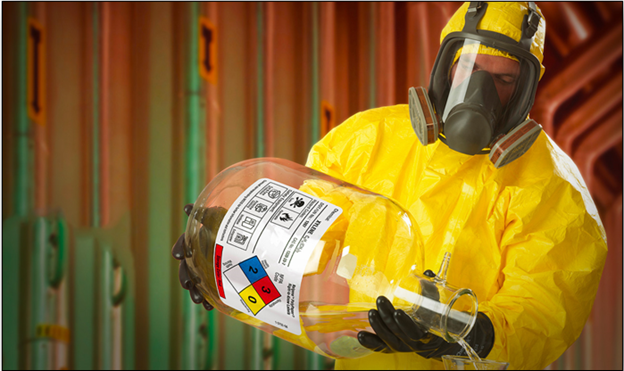
The Occupational Safety and Health Administration (OSHA) estimates that about 32 million workers in more than 3.5 million workplaces are regularly exposed to hazardous chemicals. OSHA’s Hazard Communication Standard (HCS) is an employee right-to-know law, meaning employees have the right to know about hazardous chemicals and products in the workplace and how to protect themselves from exposure. The HCS requires employers to create a Hazard Communication (HazCom) Program that includes the following components.
1 Learn the standard
The HCS uses the United Nations’ Globally Harmonized System of Classification and Labeling (GHS) to define, classify, and communicate chemical hazards. It is the employer’s or contractor’s responsibility to understand the standard and become familiar with their responsibilities.
2 Develop a chemical inventory list
Employers must have a list of all hazardous chemicals on the job site. Employers are responsible for recording the names and locations of chemicals in the workplace, along with the manufacturers’ names, addresses, and phone numbers.3 Label all containers
Chemical containers must be labeled with at least the following information: product identifier; potential hazards linked to the chemical; and the manufacturer’s name, address, and phone number. Makers and importers of chemicals must provide a label showing a signal word, pictogram, and statement for each hazard class and category.
4 Obtain a safety data sheet (SDS)
Chemical manufacturers, distributors, or importers must provide an SDS in a uniform 16-section format that details a product’s hazards. If a shipment does not come with an SDS, contact the manufacturer. Each chemical in the workplace must have an SDS that employees can access in their work area.
5 Develop a written program
Employers must communicate in writing how they handle all hazardous chemicals in their workplace. OSHA recommends listing hazards by product identifier to make it easier to track the SDS and label for each chemical.
6 Provide training
Employers must train employees about all potential chemical hazards in a language and way they understand. Training must occur before employees start work and whenever there is a new hazard in their work area. Employers must tell employees:
- how to spot hazardous chemicals;
- what personal protections are in place;
- whom to contact with a problem;
- what information is on labels and SDSs; and
- how to get access to SDSs.
For more information on OSHA’s HCS or ways to develop a HazCom Program, download free hazard communication publications from DWC or the many resources on the OSHA website.
DWC Safety Training Specialists are available to provide individual company instruction and support by contacting safetytraining@tdi.texas.gov.
